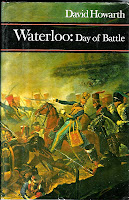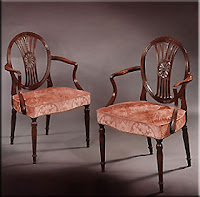
Risky Regencies: Welcome to the blog, Julia! Tell us about your July release, A Most Unconventional Match
Julia: Thanks for inviting me! A Most Unconventional Match is about finding yourself–and love–after suffering tragedy and heartache. As the story opens, Elizabeth Wellingford Lowery has lost her husband, an older man who placed her on a pedestal and took care of all the details of everyday life so she could pursue her painting. Suddenly left with no one to help her, as all her family is abroad, she is floundering when Hal Waterman pays her a call.
Possessed of a demanding, Society leader/Diamond of a mother, Hal has always carefully avoided Beauties, particularly Elizabeth Wellingford, siste-in-law of his best friend Nicky. He had an instantaneous attraction to her when they first met 7 years ago. But with her family absent at the time of her husband’s death, Hal feels obligated to stop by and offer his assistance. He intends to help Elizabeth settle her financial affairs and make a quick exit–until he meets her little boy, desolate with a grief Hal, who lost his own father as a child, recalls only too well.
So cautiously begins the dance of attraction between a gruff “man’s man” and a china-doll beauty who seem to have nothing in common–but come in time to realize they’re each other’s perfect complement! I hope readers will agree.
RR: How did you get started writing Regency-set books? What draws you to the period? And is there any other historical period you love and would like to write about?
Julia: I’ve loved the Regency since I read my first Georgette Heyer in college! Her humor, her exacting eye for the foibles of human nature played out against the backdrop of this exciting period immediately hooked me on the era. The wit and elegance of the language, the large number of unusual and interesting personages and events that give those years their characters continue to fascinate me. And of course, one day after reading a book that disappointed, I thought “I could write a better one!” So the challenge began…
I enjoy a number of historical periods. I have a Paris-set World War II book I’d love to do, another set during the Regency featuring the family of an emigre forced by the Revolution to flee France. I’d also like to do a contemporary suspense set in Texas, and a series about strong women in unusual professions that would kick off with a story about a female Navy fighter pilot.
RR: What was the research like for A Most Unconventional Match? And what are some of your favorite research sources overall for the Regency?
Julia: Since Hal is an expert on business and finance, I needed to find out more about how capital was invested and how the canal system was developed. I also needed more details about the Royal Academy, its exhibitions and school. Generally I try to write the draft of the story without doing a lot of detailed research–since research is so fascinating, I could easily get distracted and never go back to the story! As I write, I keep notes on what I need to go back and check, then explore various sources and correct/adjust the draft as needed. Priestley’s The Prince of Pleasure, Bryant’s The Age of Elegance, and Life in Regency England are good general sources, but I find it’s the small pesky details that are hardest to verify. I have a pretty large library of specific sources on everything from carriages to the art of Turner. If those fail, I appeal to the infallible source: the experts on the Beau Monde loop!
RR: We know all about that!!! And what is “risky” about this book?
Julia: Two things I suppose: since it’s as much a story of a woman’s recovering from grief and coming into her own as it is a love story, I risk alienating readers who prefer that the book focus solely on the interplay between hero and heroine. Second, since Elizabeth loved her late husband and is struggling with grief, the physical bond between her and Hal develops slowly. Maybe not the wisest approach in a market where the most popular books focus on hot sex early and often! But I had to do what fit the story best.
RR: I know in your “other job” you teach French! Do you have any French-set books in mind? And do you have any tips for time-management?
Julia: I’d love toi do the two previously mentioned–the Regency England/Restoration France tale, and the WWII Paris one. Beyond that–the heroine of the Regency story has a good friend who escaped the Revolution as a child and survived by doing all manner of things, from picking pockets to smuggling brandy. I’d like to do his story!
Time management–if I ever figure out how to do that, I’ll let you know! 🙂 It seems I’m always behind. Prioritizing, setting aside absolute hours for writing, having a basic schedule and timeline are all good, but no guarantee against the disruption of Real Life.
RR: What is next for you?
 Julia: I’m currently working on the story of the third friend featured in my very first book, The Wedding Gamble. Nicky was the hero of that one; his friend Hal is in the current release, and their other friend Ned is now getting his turn. After that, I’ll have a series of 3 unusual ladies who have secrets to overcome. My working titles (which will most certainly be changed!) are The Ruin of Miss Denby, The Redemption of Lady Winter, and The Rescue of Mrs. Gray. I also have a novella coming up, Christmas Wedding Wish in the Harlequin anthology One Candlelit Christmas in November!
Julia: I’m currently working on the story of the third friend featured in my very first book, The Wedding Gamble. Nicky was the hero of that one; his friend Hal is in the current release, and their other friend Ned is now getting his turn. After that, I’ll have a series of 3 unusual ladies who have secrets to overcome. My working titles (which will most certainly be changed!) are The Ruin of Miss Denby, The Redemption of Lady Winter, and The Rescue of Mrs. Gray. I also have a novella coming up, Christmas Wedding Wish in the Harlequin anthology One Candlelit Christmas in November!
 When I was packing for Georgia, I searched everywhere for my copy of Howarth’s Waterloo: Day of Battle, but I couldn’t find it. I especially wanted this book because it uses first hand accounts.
When I was packing for Georgia, I searched everywhere for my copy of Howarth’s Waterloo: Day of Battle, but I couldn’t find it. I especially wanted this book because it uses first hand accounts. The Waterloo Campaign by Albert A. Nofi, part of the Great Campaigns series of books, proved helpful in many ways. This treasure does explain the battle in terms I can almost understand, but it also has sidebar vignettes and explanations, biographies of the important players and information about such things as musketry, supplying the troops, and, very helpful to me, the weather.
The Waterloo Campaign by Albert A. Nofi, part of the Great Campaigns series of books, proved helpful in many ways. This treasure does explain the battle in terms I can almost understand, but it also has sidebar vignettes and explanations, biographies of the important players and information about such things as musketry, supplying the troops, and, very helpful to me, the weather. I even had my husband stop at a Borders along the way to see if they had Lady De Lancey’s book, which I think I have, but by the time I thought of it, we were on the road.
I even had my husband stop at a Borders along the way to see if they had Lady De Lancey’s book, which I think I have, but by the time I thought of it, we were on the road.













